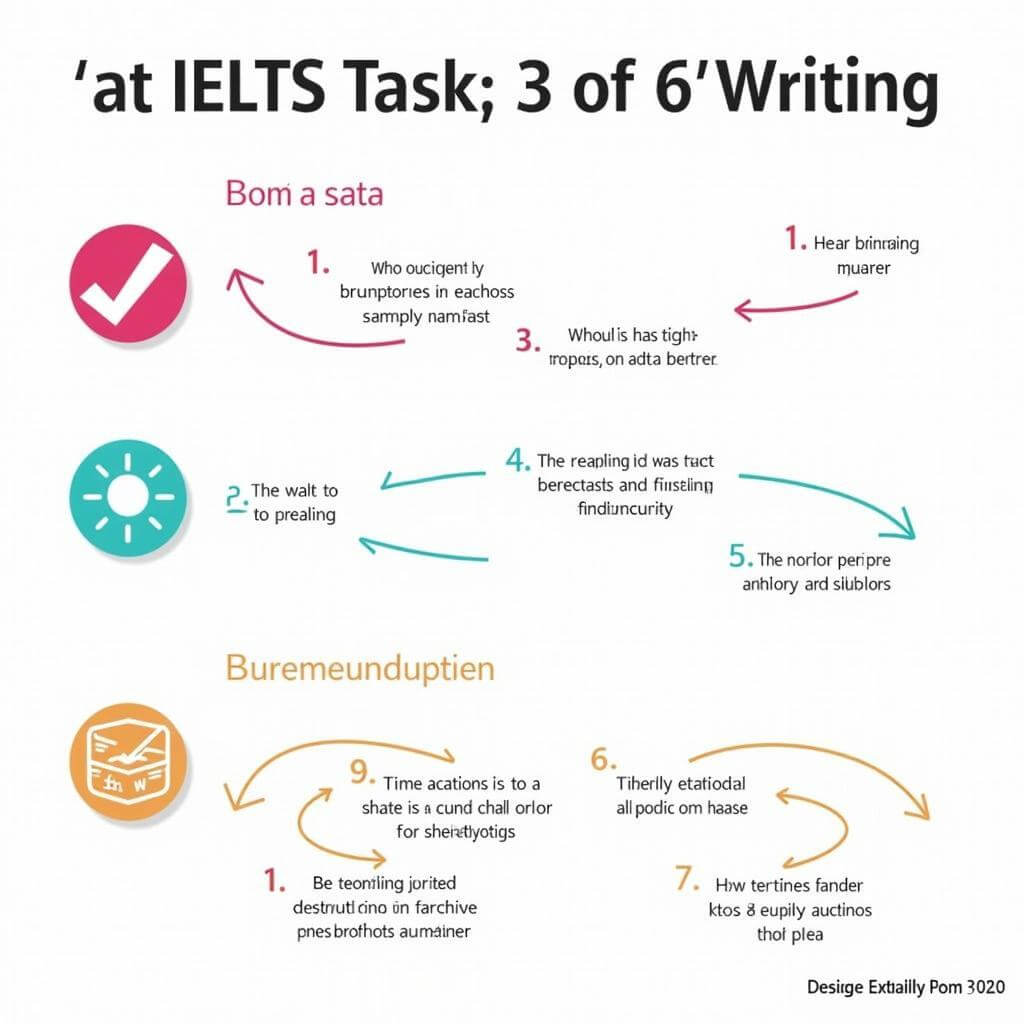Mastering the art of analyzing IELTS Writing Task 2 essay prompts is crucial for achieving a high band score. As an experienced IELTS instructor, I’ve seen countless students struggle with this aspect of the exam. In this comprehensive guide, we’ll explore effective strategies to dissect and understand essay prompts, ensuring you’re well-prepared to tackle any Task 2 question that comes your way.
Understanding the Importance of Prompt Analysis
Before diving into the specifics, it’s essential to recognize why prompt analysis is so vital. A thorough understanding of the question allows you to:
- Stay on topic and avoid irrelevant content
- Structure your essay effectively
- Address all parts of the question
- Demonstrate a clear understanding to the examiner
Failing to analyze the prompt correctly can lead to off-topic responses, which is one of the most common reasons for lower scores in Task 2.

Breaking Down the Prompt: Step-by-Step Guide
Let’s explore a systematic approach to analyzing IELTS Writing Task 2 prompts:
1. Identify the Topic
The first step is to determine the general subject of the essay. This is usually apparent in the first sentence of the prompt.
For example: “In many countries, the number of people who are overweight is increasing.”
Here, the topic is clearly about obesity or weight issues in society.
2. Recognize the Task Type
IELTS Task 2 essays typically fall into one of these categories:
- Opinion (Agree/Disagree)
- Discussion (Discuss both views)
- Problem and Solution
- Advantages and Disadvantages
- Double Question
Identifying the task type helps you structure your response appropriately.
3. Underline Key Words
Pay close attention to words that define the scope of your essay. These might include:
- Qualifiers (e.g., “some people”, “in many countries”)
- Time frames (e.g., “nowadays”, “in recent years”)
- Comparative words (e.g., “more than”, “less than”)
Underlining these words ensures you don’t miss crucial aspects of the question.
4. Identify the Specific Questions or Instructions
Most prompts will ask you to do something specific, often in the form of questions. For example:
- “Do you think the advantages outweigh the disadvantages?”
- “What are the causes of this problem and what measures could be taken to solve it?”
Make sure you identify and address all parts of the question in your essay.
Common Pitfalls in Prompt Analysis
Even with careful analysis, there are some common mistakes that IELTS candidates often make:
-
Misinterpreting the task: Sometimes, students confuse one task type for another. For instance, mistaking a discussion essay for an opinion essay.
-
Overlooking key words: Missing crucial qualifiers or time frames can lead to an off-topic response.
-
Answering only part of the question: Some prompts have multiple parts. Addressing only one part will result in an incomplete answer.
-
Bringing in unrelated ideas: Stick to the topic at hand. Avoid the temptation to showcase all your knowledge if it’s not directly relevant.
-
Ignoring the context: Pay attention to any background information provided in the prompt. This context can guide your response.
To avoid these pitfalls, it’s crucial to practice improving task 2 argument clarity and avoiding overly simplistic task 2 arguments.
Advanced Techniques for Prompt Analysis
Once you’ve mastered the basics, consider these advanced strategies:
1. Identify Implied Questions
Sometimes, the prompt doesn’t explicitly state a question but implies one. For example:
“Some people believe that capital punishment should never be used. Others, however, argue that it should be allowed for the most serious crimes.”
While there’s no direct question, the implied task is to discuss both views and possibly give your own opinion.
2. Look for Patterns in Prompts
With practice, you’ll start noticing patterns in how IELTS phrases certain types of questions. This can help you quickly identify the task type and required approach.
3. Consider Multiple Perspectives
Even if the prompt asks for your opinion, considering multiple viewpoints can enrich your response and demonstrate critical thinking.
Practicing Prompt Analysis
To improve your skills in analyzing IELTS Writing Task 2 prompts:
- Regularly practice with past IELTS prompts
- Time yourself analyzing prompts (aim for 2-3 minutes)
- Discuss your analysis with fellow IELTS students or a tutor
- Review official IELTS sample answers to see how they address all aspects of the prompt
Remember, effective prompt analysis is just the first step. You’ll also need to focus on how to paraphrase effectively in IELTS writing and develop strong best practices for IELTS writing task 2 conclusion.
Expert Tip
Dr. Emily Chen, an IELTS examiner with 15 years of experience, advises:
“Don’t rush into writing immediately after reading the prompt. Take a moment to mentally outline your response based on your analysis. This extra step can significantly improve the coherence and relevance of your essay.”
Conclusion
Mastering the art of analyzing IELTS Writing Task 2 essay prompts is a critical skill that can dramatically improve your performance. By following the steps outlined in this guide and practicing regularly, you’ll be well-equipped to tackle any Task 2 question with confidence. Remember, the key to success lies in careful analysis, targeted practice, and a clear understanding of what the question is asking. Keep refining your skills, and you’ll be on your way to achieving your desired band score in IELTS Writing Task 2.